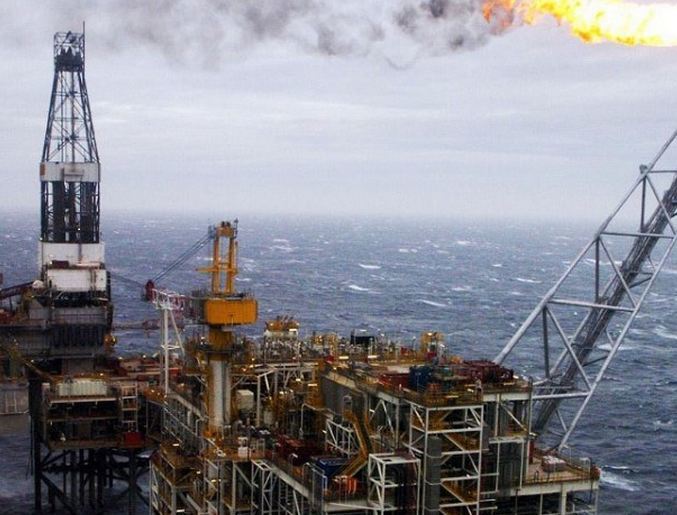
Brent crude dropped below $35 a barrel to an 11-year low before weekly U.S. government data forecast to show fuel supplies rose in the world’s biggest consuming nation.
Futures retreated as much as 4.9 percent in London, extending Tuesday’s 2.2 percent slide. U.S. oil inventories probably increased by 500,000 barrels last week, according to a Bloomberg survey before Energy Information Administration data Wednesday. The industry-funded American Petroleum Institute was said to report that fuel supplies including gasoline rose, while crude-oil stockpiles fell by 5.6 million barrels.
Oil prices have shrugged off rising tension between Iran and Saudi Arabia as supplies continue to outstrip demand. Analysts from Citigroup Inc. to UBS Group AG predict crude may approach $30 in the coming months, while U.S. inventories remain more than 130 million barrels above the five-year average. European equities slid Wednesday following a slump in Asian stocks after China weakened the yuan.
“Oil is following equities lower because of a risk aversion,” Giovanni Staunovo, an analyst at UBS in Zurich, said by e-mail. “Concerns about economic data have weighed on oil prices.”
Oil Stockpiles
Brent for February settlement fell as much as $1.80 to $34.62 a barrel on the London-based ICE Futures Europe exchange, the lowest intraday price since July 2004. It was at $34.86 as of 1:16 p.m. local time. Total volume traded was about 88 percent higher than the 100-day average.
West Texas Intermediate for February delivery lost as much as $1.35 to $34.62 a barrel on the New York Mercantile Exchange, before trading at $34.79. The contract lost 79 cents to $35.97 on Tuesday, the lowest close since Dec. 21. Prices fell 30 percent last year.
Crude inventories at Cushing, Oklahoma, the delivery point for WTI futures and the biggest U.S. oil-storage hub, increased by 1.37 million barrels last week, the API reported Tuesday, according to Twitter postings and a person familiar with the numbers. Nationwide gasoline supplies rose by 7.1 million barrels and distillates by 5.6 million barrels.
The Stoxx Europe 600 Index fell 1.8 percent Wednesday while the MSCI Asia Pacific Index slipped 0.9 percent. The Bloomberg- JPMorgan Asia Dollar Index dropped to the lowest since 2009 as China’s central bank weakened the yuan’s reference rate for the seventh day in a row, heightening the risk of a currency war.
Oil’s collapse may increase borrowing costs for producers as revenue falls. Oil-rich Alaska had its credit rating cut by Standard & Poor’s as low prices left the state with a growing gap in its budget. Moody’s Investors Service said Tuesday that metals and energy producer Freeport-McMoRan Inc.’s debt is under review for possible downgrade.
Recommended for you
